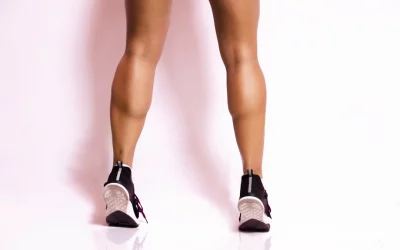Lower back pain can sneak up on you when you least expect it—after a day at the desk, a tough workout, or even just reaching down for something. Often, tight hamstrings are to blame, tugging on your lower back and making every movement feel like a challenge.
Luckily, a few targeted hamstring stretches can make all the difference, helping release that tension and letting your back feel at ease again.
In this article, we’ll explore some of the top hamstring stretches for reducing lower back pain and boosting flexibility. Whether you’re aiming to keep your back feeling fresh or tackle that end-of-day tension, these stretches will help you get there. So, get ready to stretch your way to a more comfortable, pain-free back!
The Link Between Hamstring Tightness and Lower Back Pain
Hamstring tightness occurs when the muscles at the back of your thighs become short and stiff, often causing symptoms like limited leg movement, discomfort, and constant pull at the back of your legs.
When these muscles are tight, they can tilt the pelvis backward, which strains the lower back, ultimately leading to discomfort or even chronic pain.
The causes of hamstring tightness are often all too common: prolonged sitting, especially at a desk or in a car, poor posture, and a general lack of stretching or physical activity.
These factors gradually reduce flexibility in the hamstrings, setting the stage for lower back strain. Understanding the connection between your hamstrings and back can empower you to tackle pain at the root by incorporating targeted stretches.
“Sometimes, all it takes to ease that nagging lower back pain is to give your hamstrings a little attention. Stretch them out, and you might just find the relief you’ve been missing.”
Targeted Hamstring Stretches for Lower Back Pain Relief
Standing Hamstring Stretch
The Standing Hamstring Stretch is a straightforward exercise that helps lengthen the hamstrings, taking pressure off the lower back. This stretch is great for improving flexibility and reducing discomfort caused by tight muscles.
This stretch is particularly beneficial as it helps:
-
Increase hamstring flexibility, easing tension in the lower back.
-
Improve posture by lengthening the hamstrings.
-
Reduce strain on the lower back during daily activities.
To perform the Standing Hamstring Stretch, follow these steps:
-
Stand upright with your feet hip-width apart.
-
Extend one leg straight in front, keeping your heel on the ground and toes pointing upward.
-
Hinge at your hips and gently lean forward, reaching toward your extended foot while keeping your back straight.
-
Hold this stretch for up to 30 seconds, then switch to the other leg.
Seated Hamstring Stretch
The Seated Hamstring Stretch is a versatile exercise that releases tension in the hamstrings, helping to relieve lower back pain. This stretch is perfect for increasing mobility while providing support to the lower back.
This stretch is especially beneficial as it helps:
-
Lengthen the hamstrings, reducing tightness in the lower back.
-
Support proper alignment by releasing tension in the thighs.
-
Enhance flexibility, making movement more comfortable.
To perform the Seated Hamstring Stretch, follow these steps:
-
Sit on the floor with both legs extended straight in front of you.
-
Reach forward toward your toes, bending from your hips and keeping your back straight.
-
Hold the stretch for up to 30 seconds, focusing on deep breathing as you release tension in the hamstrings.
Reclining Hamstring Stretch (With a Strap)
The Reclining Hamstring Stretch is a gentle stretch that uses a strap or towel to help you extend your hamstrings, even if flexibility is limited. This stretch is ideal for those looking to relieve back tension without placing additional strain on the lower back.
This stretch is particularly beneficial as it helps:
-
Extend the hamstrings gently, easing lower back pressure.
-
Improve flexibility in a controlled way.
-
Support lower back comfort with minimal impact.
To perform the Reclining Hamstring Stretch, follow these steps:
-
Lie on your back with one knee bent and the other leg extended on the floor.
-
Loop a strap or towel around the arch of your raised foot.
-
Gently pull your leg toward you, keeping it straight and breathing deeply.
-
Hold for up to 30 seconds, then switch legs.
Wall Hamstring Stretch
The Wall Hamstring Stretch is a passive stretch that uses a wall for support, allowing you to target the hamstrings with ease. This stretch lengthens the muscles without straining the back, making it an excellent choice for relieving lower back discomfort.
This stretch is particularly beneficial as it helps:
-
Lengthen the hamstrings without putting pressure on the back.
-
Increase flexibility, promoting better alignment and movement.
-
Alleviate tension in the lower back through passive stretching.
To perform the Wall Hamstring Stretch, follow these steps:
-
Lie on your back next to a wall, extending one leg up against the wall and the other flat on the ground.
-
Keep your extended leg straight, with your heel resting on the wall.
-
Hold the position for up to 30 seconds, then switch legs.
Incorporating these targeted hamstring stretches into your routine can help alleviate lower back pain, improve flexibility, and support overall back health. For personalized guidance, explore hamstring stretches tailored to your needs with Ada and Bruce on WeStretch.
How to Make Hamstring Stretching Part of Your Daily Routine
Adding hamstring stretches to your daily routine doesn’t have to be a chore—it can be a simple, effective way to support your back health. Start your morning with a gentle stretch, like the standing or seated hamstring stretch, to wake up your muscles and prepare for the day. In the evening, wind down with a reclining or wall hamstring stretch to ease any lingering tension.
Consistency is your best friend here. Committing to these stretches daily improves flexibility and fortifies your lower back, helping to prevent future strain. With just a few minutes each day, you’ll build a healthier, more resilient back and enjoy lasting comfort.
Exercise Smarter with WeStretch: Your All-in-One Stretching Assistant
A consistent full-body stretching routine is essential for improving flexibility, supporting injury prevention, and enhancing overall well-being. Carefully following simple yet effective stretches targeting the hamstrings, hip flexors, back, quads, chest, and shoulders, individuals of any fitness level can reap the benefits.
Regular stretching, with attention to proper form and consistency, can help you move more freely, recover faster, and feel better in everyday activities.
Looking for a way to add some fun to your stretching routine? Check out WeStretch—an app that’s like your own personal stretch coach! With tailored plans, easy-to-follow demos, and progress tracking, it’s got everything you need to keep you limber and on point. Ready to get flexible? Sign up today and let’s get stretching!
FAQ
What is the best hamstring stretch for relieving lower back pain?
The best stretch depends on your flexibility level and comfort. The Standing Hamstring Stretch and Wall Hamstring Stretch are effective for most people, targeting the hamstrings without putting extra pressure on the back. Choose a stretch that feels comfortable, and incorporate it regularly for the best relief.
How often should I do hamstring stretches to alleviate lower back pain?
Aim to stretch your hamstrings at least 3-4 times per week. If you experience ongoing lower back pain, daily stretching may offer more consistent relief. Regular practice improves flexibility and reduces tightness, providing long-term support for lower back health.
Can tight hamstrings really cause lower back pain?
Yes, tight hamstrings can pull on your pelvis, causing strain on the lower back muscles. This can lead to discomfort or pain over time, especially if you sit or have poor posture frequently. Stretching the hamstrings helps alleviate this tension, reducing lower back pain.
Are these hamstring stretches suitable for beginners?
Absolutely! These stretches are beginner-friendly and can be adjusted to your comfort level. For example, using a strap in the Reclining Hamstring Stretch helps those with limited flexibility ease into the stretch. Start gently, and only go as far as your body allows.
How long should I hold each hamstring stretch?
For optimal benefit, hold each hamstring stretch for up to 30 seconds. This duration allows your muscles to relax and release tension without overstretching. Repeat the stretch on each side, breathing deeply to maximize flexibility and reduce back discomfort.






